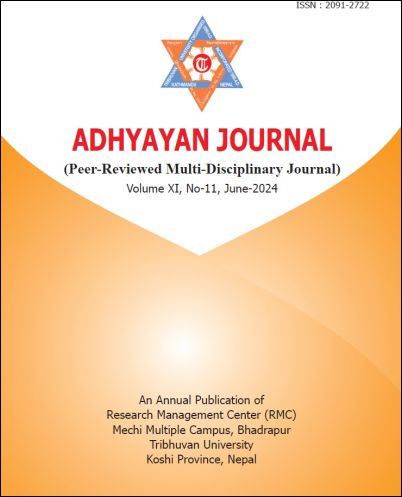Flowering Plant Diversity of Differentially Disturbed Region of Terai Sal (Shorea robusta) Forest in Eastern Nepal
DOI:
https://doi.org/10.3126/aj.v11i11.67074Keywords:
Charali Sal forest, Flora, Jhapa district, Lowland, Tropical vegetationAbstract
Terai Sal (Shorea robusta C.F.Gaertn.) forest, characteristic forest of lowland of Nepal, faces direct and indirect impacts from various anthropogenic activities. The present work aimed to study and document the flowering plant diversity within differentially disturbed sites of Charali Sal forest. Additionally, we accessed the habitat condition, analyzed the invasion status and prioritize the threats faced by the plant communities and recommended ways to mitigate the prevalent threats. We employed purposive sampling technique to sample the forest areas and nested plot design for vegetation sampling. Thirty sample plots, each measuring 10 m × 10 m, were established on two differentially disturbed sites (disturbed and undisturbed) of Charali Sal forest. A total of 111 flowering plant species belonging to 39 families were documented in the sampling sites, with 90 total species (89 identified) in disturbed sites and 86 species (80 identified) in undisturbed sites. Although the disturbed sites contained higher number of flowering plants, the diversity indices (Simpson and Shannon-wiener’s) indicated higher diversity on undisturbed site. Disturbed site exhibited higher human encroachment and higher invasion of alien species compared to undisturbed site. Specific habitat management plans should be devised for the control and eradication of invasive species from the Charali Sal forest. We highly recommend to delimit a buffer zone all around the forest perimeter to regulate local access inside the forest. Collecting and harvesting various forest products should be restricted to the buffer zone, while the inner forest areas should be under careful and strict management. Implementing these strict managemental strategies would be challenging, but it is crucial for preserving the natural integrity of the forest.




